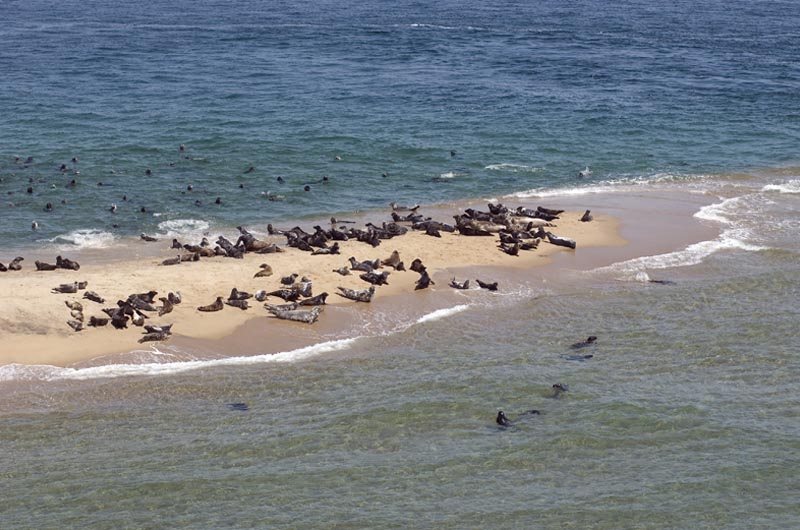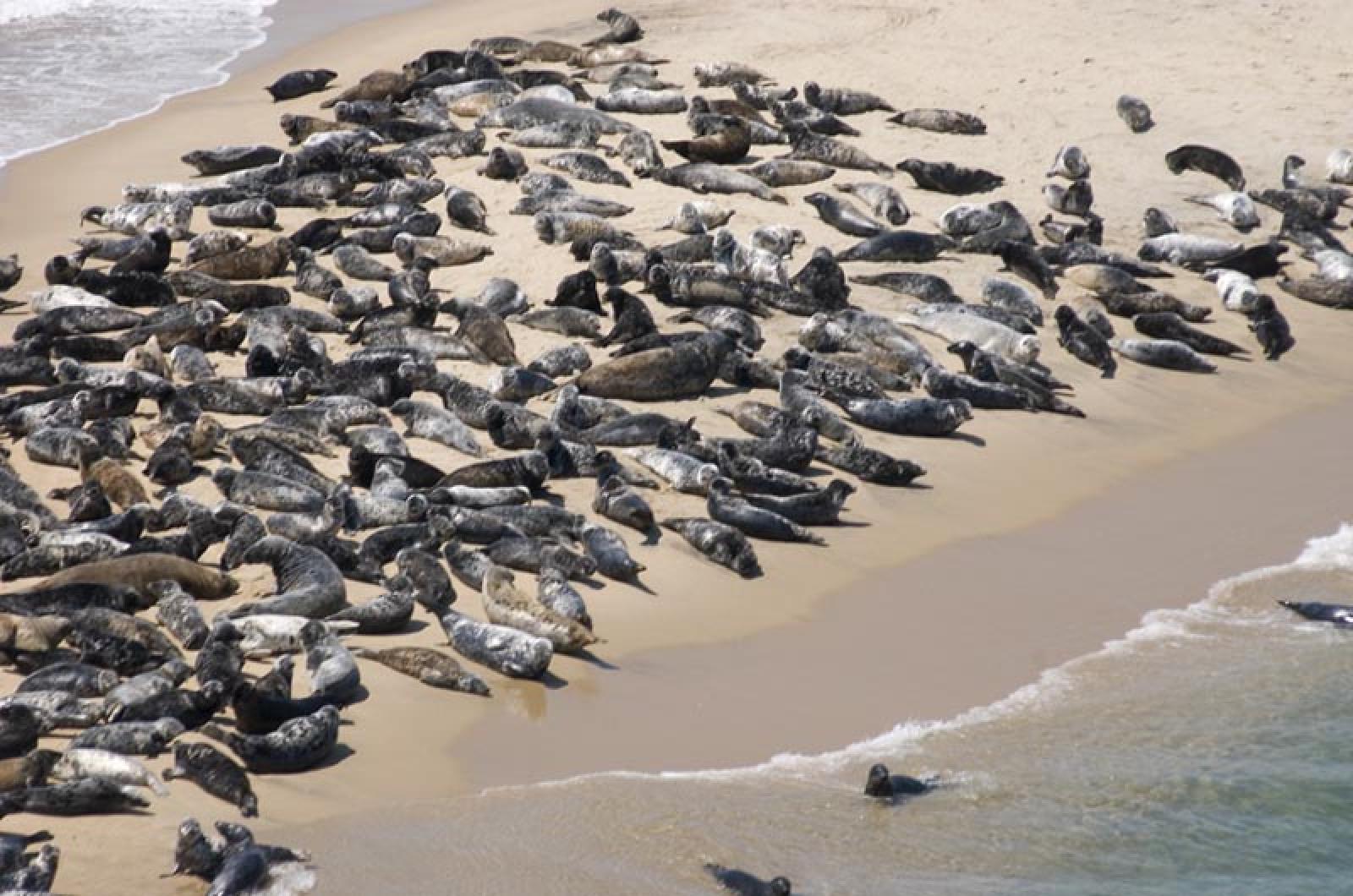On the surface it seems like a simple and straightforward equation: more seals equals more great white sharks. The connection, however, is likely far more complicated. More science about both sharks and seals is needed to better understand what is coincidence and what is cause and effect.
What does it mean to live with rebounding populations of marine animals? We are watching predator/prey dynamics shift in the Cape and Islands marine ecosystem. Over the past 50 years, since the establishment of the National Seashore and legal protection of certain species, the shorelines and wildlife of the region have been changing around us. The changes are due to both human-induced and natural changes to the marine environment. In addition, increasing human presence on the coast has meant increasing contact with coastal and near coast wildlife.
In discussing the presence of gray seals and white sharks, it is critical to understand what we know of their past and present numbers, their ecological role and the gaps that remain in our knowledge.
Archaeological records, some dating back 4,000 years, document that harbor and gray seals were distributed along the U.S. coast from Maine to Long Island prior to European settlement (Bowen 2012). In 1888 Massachusetts began what may have been the longest-running seal bounty program on record: 74 years, ending in 1962. During the bounty years, seal noses or tails were turned in to the state as an attempt to address the issue of declining fish stocks. Although the number of seals in New England’s coastal waters prior to the bounty system is unknown, it is estimated that between 72,000 and 136,000 were killed for bounties. A benefit to fish stocks has never been documented.

By the early 1960s, seals — gray seals in particular — were virtually absent from our shores. In 1962, the state of Massachusetts stopped paying bounties on seals. In 1972, all marine mammals were federally protected by the Marine Mammal Protection Act.
Seals responded to protection in both Canada and the U.S. and their numbers began to rebound. Gray seals tagged and marked in Canada were regularly sighted in U.S. waters, indicating that they move freely between Canada and the U.S. In 1988, five gray seal pups were recorded on Muskeget Island by biologists. During spring counts of all seals at Muskeget and Monomoy in 1994, 2,010 individuals were counted. In 1999 during a similar spring survey of Muskeget Island and Monomoy, 5,611 seals were counted. In March 2011 a maximum count of 15,756 was obtained in southeastern Massachusetts coastal waters.
Not only have gray seals reappeared on the Cape and Islands, another species has attracted attention on Cape Cod: the white shark.
White sharks have had some level of protection in federal waters since 1997 and in Massachusetts state waters since 2005. In 2008, the Atlantic States Marine Fisheries Commission (ASMFC) implemented the Interstate Fisheries Plan for coastal sharks that was adopted by Massachusetts. Federal and state regulations prohibit the landing of white sharks by both recreational and commercial fishermen.
White sharks are not newcomers to the Cape, and they have been documented off the coast of Maine as well. There are records of white sharks in Massachusetts waters dating back to the 1800s. Similar to the gray seal population, there is no historic population estimate for white sharks in this area. Nor is a current abundance estimate available, although they are listed as a vulnerable species by the International Union for Conservation of Nature. Shark sightings appear to be on the rise — it is unclear if this is due to a real increase in the population or simply a redistribution of white sharks to local waters. The reason for the redistribution is also unclear. It is tempting to connect the coincident increase in shark sightings with the increased seal presence on the Cape. What is needed is data to connect the dots.
Given the lack of historic data and the significant changes in the coastal ecosystem, it is hard to predict the trajectories of gray seals and white sharks. Research from areas outside of Cape Cod where pinniped and shark populations overlap, such as central California, indicates the diverse diet of white sharks includes seals. Also, data from local seal surveys, marine mammal stranding organizations and shark tagging efforts indicate that white sharks frequent the waters near seal haul outs, such as Monomoy. However, we do not know the numbers of animals, frequency of their presence, or even the energetic needs of individuals. Scientists are currently working to gather information and data about both sharks and seals in our waters and on our shores. Dr. Greg Skomal of the Massachusetts Division of Marine Fisheries began tagging great white sharks around Cape Cod in 2009 to study local movements, site fidelity, and residency. The Northwest Atlantic Seal Research Consortium has been approaching the question of seal populations through a variety of studies.
The consortium and its partners recently deployed satellite tags on gray seals on Cape Cod with the goal of getting a better understanding of gray seal seasonal and day-to-day movements. Both entities are also working to get a clear understanding of what each species needs, calorically, to survive here, and whether diet and behavior differ between life stages and sexes of both animals.
Although progress has been made by researchers, the questions outweigh the answers at present. Only by increasing efforts to study both seals and sharks can we hope to understand what links the two species and to provide residents and managers with sound information for the decisions that will no doubt need to be made in the years to come.
This is a collaborative piece written by the steering committee for the Northwest Atlantic Seal Research Consortium. It was provided to the Gazette by Cathrine Macort, executive assistant at the Center for Coastal Studies in Provincetown.






Comments (9)
Comments
Comment policy »